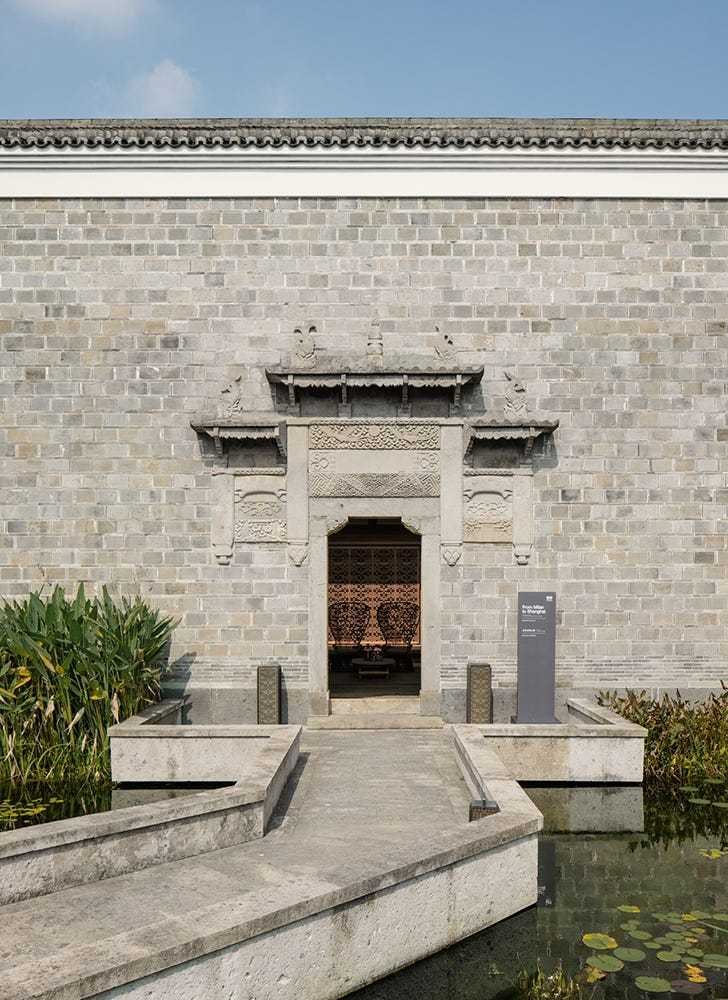nicolas abdelkader unveils bilateral, humanistic proposal for the US-mexican border
a new proposal for the decaying US-mexican border
damaged landscapes, increasing militarization, mistreatment of migrants by the US border patrol, corruption, the cost of maintaining the wall, huge construction cost overruns, blasting of mountains, cut roads, destroyed sacred lands and places of worship, obstruction of the natural flow of water and the movement of wildlife — the list of negative consequences of the construction of the border wall erected (in part) under the trump administration is unfortunately very long.
taking this into account, multidisciplinary creative studio nicolas abdelkader introduces ‘new border’, proposing a constructive alternative bilateral, ecological and humanistic solution for the decaying US–mexican border. through this project, the architects seek to express that the wall can and must be part of the solution to the immigration issue. the proposal approaches the situation in a fresh manner, considering the economy and a reuse logic.

front view: three types of houses | 2 rooms; 57sqm | 3 rooms; 77sqm | 4 rooms; 96sqm
all images courtesy of nicolas abdelkader
a humanistic, ecologic approach
through this newly unveiled proposal, the architects come to create a porosity symbolized by ‘doors’. these doors help activate a process of dialogue between people and states — a sine qua non condition for a perspective of peace between people. meanwhile, a series of open corridors promote the necessary migration of wildlife and threatened and endangered species such as the jaguar, ocelot, mexican gray wolf.
this concept comes with multiple objectives. first of all, the new border seeks to create a real ‘restoration economy’ by removing certain sections of the wall in places where the topography of the land allows it and recycling the modules that once constituted the wall for the construction of housing, public facilities, schools, shops, infrastructure, roads, etc. in this way, the project protects human rights, provides security and welcomes residents and new arrivals at the border, offering them housing, education, employment and a future perspective other than the ‘chimera of the american eldorado’.
establishing a reuse industry
the project involves the creation of a broad-based materials reuse industry to rehabilitate the tens of thousands of steel modules ‘languishing in the sun and now serving as a relic of the trump era’ as the architects mention. these modules would be used to construct buildings and various common infrastructures, roads, etc. forming the ‘new frontier’. piles of light poles, PVC pipes, electrical wires, precast concrete, wire mesh, crushed aggregate, riprap rocks, sand, culverts, and other disused materials would have a second life.
in this way, the proposal also increases financial and humanitarian resources by selling on the steel market part of the 500 million dollars worth of corten steel modules abandoned in the desert and then reinjecting the money collected into the construction, education, and training of the populations of the new border on the mexican and american sides.

rear view: three types of houses | 2 rooms; 57sqm | 3 rooms; 77sqm | 4 rooms; 96sqm
nicolas abdelkader’s proposal creates a more humane border policy and new job opportunities in construction, services, humanitarian work, education, energy, agriculture. in this context, it promotes the cultivation of the desert land with the establishment of agricultural plots planted with vines allowing the future inhabitants of the new frontier to generate substantial income and ultimately a certain material independence. following the example of several wine producers established in the atacama desert in chile or in the semi-arid regions of southwest morocco.
today, the mexican vineyard covers an area of nearly 40,000 hectares. depending on the results of geological drilling tests, permeability and observations of the targeted water tables, the hectares of vineyards would be irrigated exclusively with renewable groundwater. the electricity needed to irrigate the crops would be produced by the solar energy that is omnipresent in these regions. financing other than the resale of steel could be sought, for example, from the inter-american development bank (idb).

front view: classrooms and learning workshops that can be adapted in surface area

rear view: classrooms and learning workshops that can be adapted in surface area

front view: spaces needed for community life

rear view: spaces needed for community life
1/5
project info:
name: new border
designer: nicolas abdelkader
designboom has received this project from our ‘DIY submissions‘ feature, where we welcome our readers to submit their own work for publication. see more project submissions from our readers here.
edited by: myrto katsikopoulou | designboom









